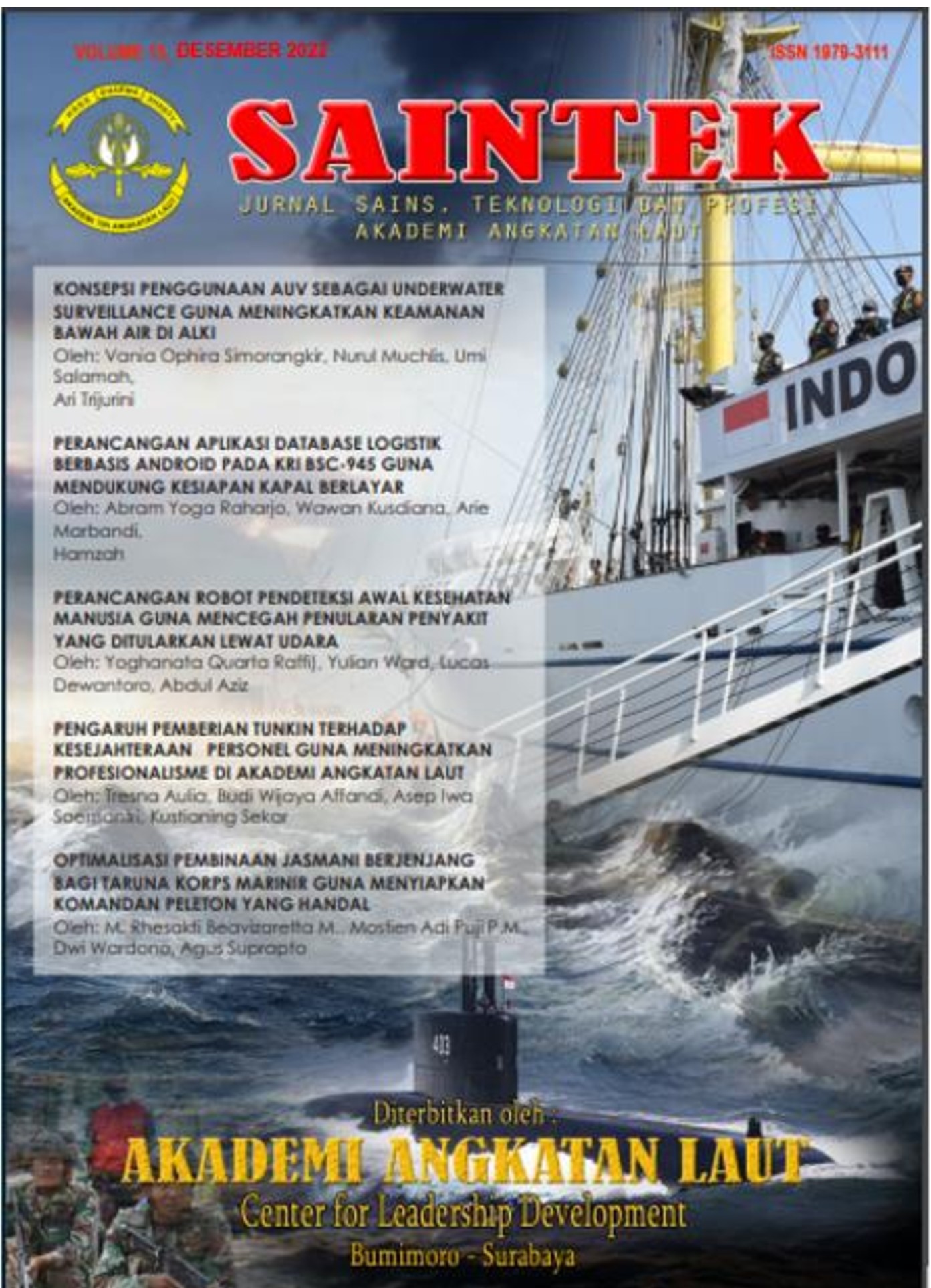Analysis of Propeller Boss Cap Fin Installation for Energy Saving Device on 60 Meter Patrol Boat Propulsion System
DOI:
https://doi.org/10.59447/saintek.v18i1.166Abstract
Ship Velocity is a major factor in the design of a patrol boat propulsion system. One of the efforts that can be made is to add device behind the propeller, one of which is by adding a Bosch Propeller cap Fin (PBCF). In addition to increasing the efficiency of the PBCF installation, it can also increase the Energy Saving Device (ESD). This study examines the fluid flow and performance of the PBCF installation on the B5-105 propeller on a 60-meter patrol boat. In addition, by increasing the efficiency of the propeller, it can last longer on patrol. This study analyzes the B5-105 propeller with the addition of PBCF, where the pitch angle of the PBCF fin is 15 ° with a speed of 600 Rpm. Fluid flow and performance analysis were carried out using Computational Fluid Dynamics. Based on the results of the fluid analysis, the installation of the PBCF obtained the results of the flow pressure distribution after the propeller was more evenly distributed. Thus eliminating the hub vortex which ultimately reduces noise and there is turbulence flow between the PBCF and the propeller which affects propulsion performance. Based on the performance analysis on all variations of the PBCF pitch angle, the average value of the thrust increase was 3.4%, the torque increase was 4.34% and the efficiency increase was 3.4%. So it can be concluded that PBCF can increase thrust, increase torque, increase efficiency and reduce hub vortex that occurs on the propeller boss.
Keywords: CFD; ESD; Hub Vortex, PBCF, Propeller B5-105
Downloads
Downloads
Published
Issue
Section
License
Copyright (c) 2025 Saintek: Jurnal Sains Teknologi dan Profesi Akademi Angkatan Laut

This work is licensed under a Creative Commons Attribution-NonCommercial 4.0 International License.
Setiap penulis yang mengirim artikel pada jurnal Saintek setuju untuk mengalihkan hak penerbitan pada Jurnal
seluruh artikel yang diterbitkan pada jurnal ini dilisensikan dibawah lisensi CC BY NC

Ciptaan disebarluaskan di bawah Lisensi Creative Commons Atribusi-NonKomersial 4.0 Internasional.






